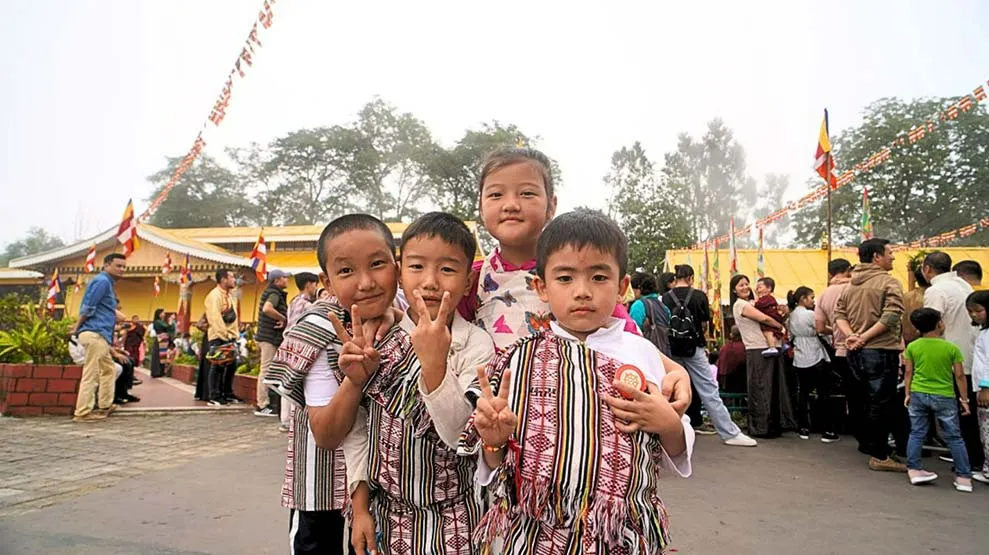
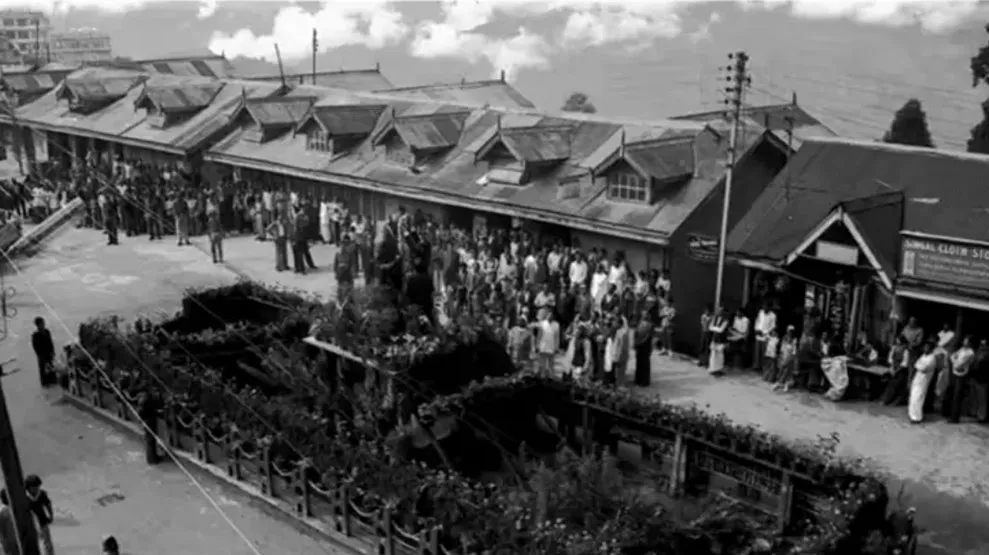
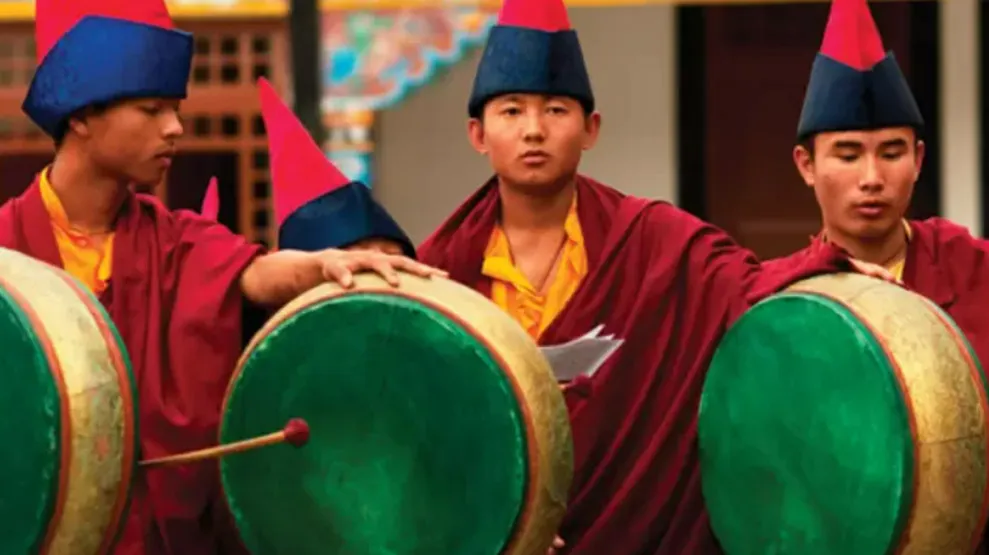
Introduction
Sikkim, nestled in the lap of the Eastern Himalayas, is a state blessed with rich history, vibrant culture, and breathtaking landscapes. Known for its harmonious blend of ethnic groups and traditions, Sikkim offers travelers a unique cultural experience alongside its scenic beauty.
From ancient monasteries to colorful festivals, and from traditional dresses to warm hospitality, the indigenous communities of Sikkim form the heart of its cultural identity.

History of Sikkim
Sikkim's history is as interesting as its natural beauty. Before joining India in 1975, the area was an autonomous monarchy. For almost 300 years, the Namgyal dynasty ruled the kingdom of Sikkim. During this period, Sikkim became a vital commercial center, drawing ethnic groups such as Bhutias, Lepchas, and Nepalese immigrants.

Sikkim's strategic location between India, Tibet, Bhutan, and Nepal makes it a vital trade and business center. It did, however, make Sikkim vulnerable to external forces. Over time, neighboring nations have subjected the region to invasions and warfare.
Sikkim signed an agreement with the British Empire in the late nineteenth century, recognizing it as a protectorate. This was a watershed moment in Sikkim's history, laying the framework for its eventual unification into British India.
Sikkim became an Indian protectorate when India attained independence in 1947. The Chogyal of Sikkim remained in power while India handled the country's exterior affairs, defense, and communications. However, rising regional and political tensions prompted calls for reform inside Sikkim.
In 1975, Sikkim conducted a referendum in which the majority of the population chose to join India. As a result, Sikkim became India's 22nd state, thereby ending the reign of the Namgyal dynasty. Since that time, Sikkim has thrived as an essential part of India, embracing its different cultures and contributing to the country's growth and prosperity.
Culture of Sikkim
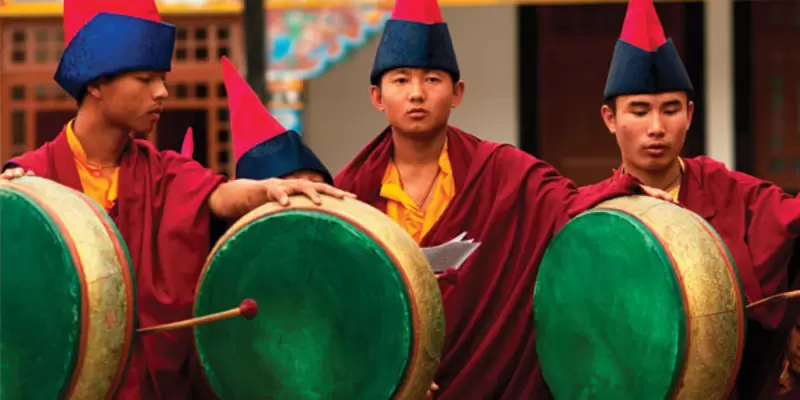
Sikkim's cultural tapestry is a wonderful combination of many ethnicities, each contributing to the region's distinctive customs and traditions. Sikkim's largest ethnic groups are the Bhutias, Lepchas, and Nepali. The Bhutias have a particular way of life and celebrate their culture via festivals, traditional dances, and distinctive food. The Lepchas, well-known for their strong relationship with nature, have their own set of customs, including animistic rites and woodcraft. On the other hand, the Nepalese bring their rich cultural legacy with them, giving brilliant colors to Sikkimese culture .
Festivals of Sikkim
The Top 5 popular festivals in Sikkim are:
1. Losoong - Also called Sonam Losoong, Namsoong it is observed by Bhutias & Lepchas as the Sikkimese/Lepcha New Year. It usuallly falls in the month of December in the Gregorian calendar
2. Drupka Tshechi - This festival celebrates Lord Buddha's first preaching of the Four Noble Truths to his first five disciples at Saranath. The festival is held on the 4th day of the 6th month of the Tibetan lunar calendar which usually falls in the month of July-August in the Gregorian Calendar. It is celebrated in a grand way at Lashar Vally by the Dokpas (Nomadic Yak Herdsmen).
3. Saga Dawa - This is celebrated with great enthusiasm and fervour by the buddhist community every year in the month of May. This auspicious occasion commemorates Lord Buddha’s birth, his attainment of enlightenment and salvation from this corporeal world. For all travellers and cultural aficionados seeking a sneak-peek into vibrant Buddhist culture, undoubtedly, Saga Dawa provides for a perfect platform offering a visual treat of various religious ceremonies and street processions.
4. Dashain - This is the main festival of the Hindu Nepalese community of Sikkim celebrated usually in the month of October. It coincides and is celebrated in the same way as Dusherra in other parts of the country.
5. Pang Lhabsol - This is celebrated to offer respect and homage to the guardian deity of Sikkim, the third highest mountain in the world, Mount Kanchenjunga. Pang translates ‘to witness’ and apart from paying homage it also commemorates the Treaty of brotherhood among Lepchas and Bhutias. It signifies the unity of the Sikkimese tribes. The festival is considered very auspicious and happens in between August and September.
People of Sikkim
Sikkim's people are noted for their warmth and friendliness. They are proud of their cultural legacy and are always willing to share it with guests. The inhabitants are strongly established in their traditions and live with a strong feeling of community. As you go through the villages and cities of Sikkim during your North Sikkim tour package you will notice the ethnic groups' togetherness and tranquility. The North Sikkim Tour can include tourist spots such as Gurudongmar Lake, Lachen, Lachung, Dzongu, Zero Point (Yumesamdong), Yumthang Valley (Valley of Flowers), Mount Katao, Kala Patthar, Thangu Valley, Sanglaphu Cho Lake etc.
Traditional Dress of Sikkim for Men and Women
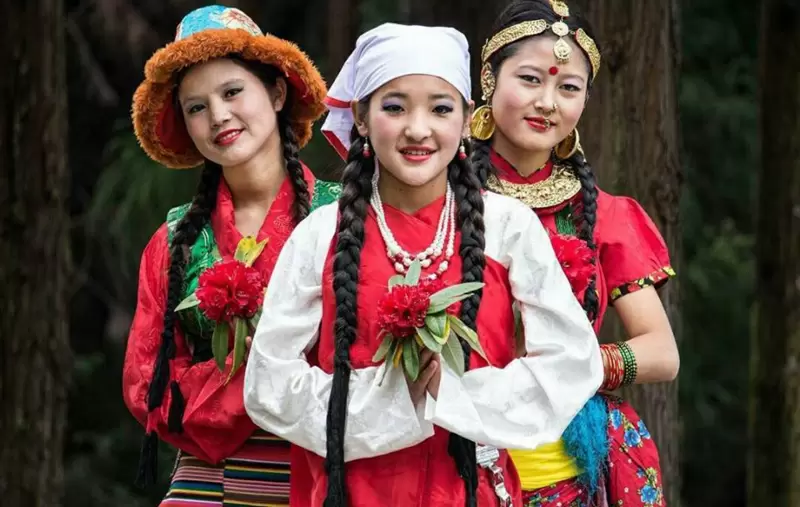
The traditional dresses of Sikkim are both exquisite and meaningful. The Bhutia men dress in "Kho," a loose cloak-like garment made of silk or woolen cloth and accessorize with a "Kira," a leather waistline. On the other hand, Bhutia women dress in a "Honju," a full-sleeved, elaborately embroidered shirt, and a “Bakhu," wraparound silk or woolen skirt.
The Lepcha men’s dress is basically called ‘Dum – praa’ or Thokroah. A Handwoven fabric thrown round the body, leaving the right arm free. The top corners of Dumpraa is tied with a safety pin on the left shoulder. A Dum- praa reaches down to the Knees or sometimes calf; and it is gathered round the waist with a Nyamrek, a band to hold or support the dress. Tago is a loose shirt worn underneath the Dumpraa followed by Tomoo. The Lepcha trousers reach up to the calf, between the knee and ankle. Tomoo is also designed to easily pick off or get rid of leeches in the fields or woods during the Monsoon. The Lepchas put on Tago and Tomoo when they are working in the field or at home. They are usually made of thick cotton fibers and are white. A bag, popularly known as ‘Tanggyip’, is a part and parcel of the Lepcha dress. Sumok Thaktuk is the headgear, intricately woven with a variety of bamboo. In the ancient days, the weavers used to weave the hat, chanting mantras and prayers for the would-be owner of the specific hat. These hats were woven for specific personalities and symbolized status and responsibility. High priests (Mun /Bongthing)/ Chieftans/Generals of the Army mainly wore these hats.

Baanpok: It means short knife. Lepcha women's dress is basically called “Dum – Bun” or sometimes “Dumdyem”. In the old days, thick black clothes, or “Tamaan – Dam”, a coarse silk dress, spun from the cocoon of a large caterpillar that is found in the Sikkim and Darjeeling Hills, were worn by the women. Lepcha women wear a cloth called Dumvum or Dumdyen, resembling a saree, as part of their traditional dress. It’s a silky, smooth dress, along with a loose blouse known as Tago which is worn underneath. A Nyamrek and Taro belt, as well as a cap(Headscarf), are worn to complete the outfit. Ornaments include the Samrangbur. It is made out of silver, worn around the waist along with Nyamrek and Stone necklaces. Women wear a "Dhaka Topi," a fashionable headgear, and a "Gunyo Cholo," a colorful blouse, as part of the Nepali community in Sikkim's traditional costume.
When it comes to the Nepali community, there are numerous sub-sects leading to a variety of clothing for which we can generally look at a common thread. The Men wear a ‘Daura Sural’ which is essentially a waistcoat with an inner short swept across the chest and slim-fitting pant bottoms. The Women across the board don a ‘Dhaka Saree’ which is a take on the traditional saree, albeit traditional Nepali motifs and patterns.
Sikkim has an intriguing combination of history and culture. The rich historical foundation and thriving cultural legacy provide travelers with a unique experience. As you travel around Sikkim, you will notice the peaceful cohabitation of many tribes and their pride in their traditions. Sikkim has something for everyone, whether you want to explore old monasteries, indulge in local cuisine, or immerse yourself in the festivals. If you wish to know more about the monasteries, you can read about it in our Monasteries in Sikkim
Written by Pintso Gyatso: Unveiling the Hidden Gems of Northeast India
Pintso, a native of Gangtok, Sikkim, isn't just a travel writer – he's a seasoned explorer. Years spent trekking and mountain biking across the region honed his intimate knowledge of Sikkim and Darjeeling's hidden treasures.
Co-founding OurGuest, Pintso's passion extends beyond travel. He champions sustainable tourism, working with local homestays and communities to create enriching experiences that benefit both travelers and the region. From building eco-lodges to collaborating with local guides, Pintso's expertise ensures you discover the authentic Northeast India, one adventure at a time.
For a customized Sikkim Tour experience you can contact us at +91-7669503993 or email to contact@ourguest.in




